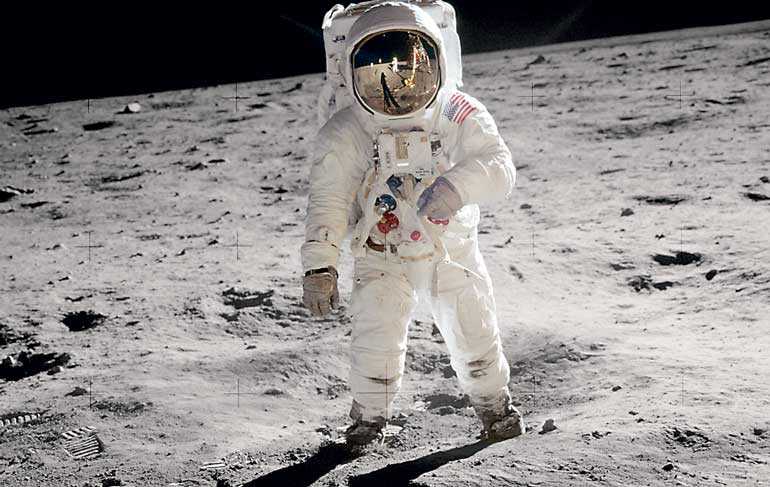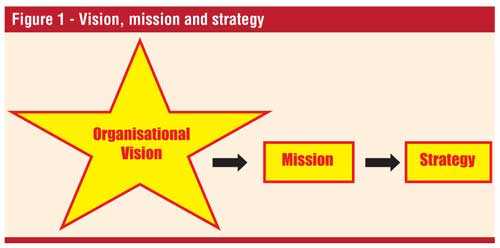Saturday Jan 03, 2026
Saturday Jan 03, 2026
Tuesday, 30 July 2019 00:00 - - {{hitsCtrl.values.hits}}

There is a famous story of how a minor worker in the NASA complex answered President Kennedy. During the late 60s when the exciting ‘moon missions’ were in operation, President Kennedy who visited NASA complex took a minute to ask a minor worker sweeping the floor what she was doing. She came up with an astonishing answer: “I am helping to send a man to the moon.” This is a fascinating illustration of establishing a clear organisational vision.
The whole world talked about the 50th Anniversary of Apollo 11 Moon Landing on 20 July. The first spaceflight that landed men on the moon was Apollo 11. The American crew of Commander Neil Armstrong and Lunar Module Pilot Aldrin landed the Apollo Lunar Module Eagle on 20 July1969, at 20:17 UTC.

In this whole moon mission not only the astronauts but even the minor workers’ employee displayed a tremendous level of engagement, of which the above answer of the minor worker provides superb evidence.
First, it is essential to draw an insight into employee engagement. Employee engagement enables an organisation to excel and gain competitive advantage. Employee engagement has thus become a buzz word in management circles.
It is evident that employees engaged with their job as well as their organisation are often loyal, innovative, creative and customer-oriented. They have an intention to stay with the company for a long time. The important thing is that engaged employees are the people who do not hesitate to walk the extra mile in order to fulfil the organisation’s goals.
The view of a researcher by the name of Anitha in 2014 is that the outcomes of employee engagement contribute to employee job performance. Also, AON a survey organisation mentioned in their report of 2018 that employee engagement leads to organisational financial performance. This paves the way for both business and academia to understand the essence of employee engagement.
Sailors have always used the ‘North Star’ as a direction-finding guide. Organisational vision also works as a ‘North Star’. It directs employees about where they should reach in a specific period of time, may be after five years. When communicating his organisational vision to his employees, the leader plays a vital role.

Two researchers,Seijts and Crim (2006) emphasised the importance of the leader communicating a clear vision. The vision or goals of senior leadership and departmental heads of an organisation, division, unit, or team is understood to be of foremost concern for employees.
Seijts and Crim further that state employees consider awareness and the importance of organisational goals as well as the most appropriate way to achieve them. Seijts and Crim’s view evidently includes building vigilance on organisational vision, mission, strategies and priorities among employees, for they must have a specific idea about what they do and why they do it.
This is the third ‘C’ denoting clarity introduced by Seijts and Crim, who present remarkable insights through their concept called ‘The 10 Cs of employee engagement’; they mainly revolve around what leaders should do to make stronger employee engagement in the business world.
The AON report of 2015 discloses that leadership is an important driver of employee engagement. It also reveals that leaders are the ultimate creators of an employee engagement culture in the organisation. They believe that “leadership is what makes or breaks the projects”.

A leader instructs, motivates and influences his/her followers. Gallup is a survey organisation that has been surveying the levels of employee engagement all over the world for a considerable number of years. Their view is that whoever is named leader of an organisation is one of the most important decision makers, whose decisions play an important role in enhancing employee engagement.
The Gallup Report of 2013 reveals that a great leader engages his/her employees in many ways, with genuine, authentic care and concern about his/her subordinates.The leader can stimulate a positive and open work environment by building strong, trusting relationships with their staff members. Consequently employees sense a notion of support and engagement. As the Gallup Report states, great managers care about individual performance while investing in talent.
With a sample of 1,003 employees in the US, Gallup (2013) conducted a research to test the effects of the manager’s approach to employee engagement and strengths. Their report reveals that:“One-quarter (25%) of American workers fell into the ignored category, and 40% of these employees were actively disengaged. Managers who focused on their employees’ weakness cut active disengagement roughly in half, to 22%, proving that even negative attention is better than no attention at all in employees’ eyes. By contrast, for the 37% who agreed that their supervisor focused on their strengths, active disengagement fell dramatically to 1%.”
Iddagoda et al. (2016) in their study reveal that, citing two academics, namely Xu and Thomas (2010), leaders whose main concern is harvesting the benefits of employee engagement should primarily concerned about teambuilding of which developing a genuine interest in the personal development of team members and celebrating the achievements of the team are two key examples.

On the other hand, Carmeli et al. (2009) found a participatory decision-making process among top management teams is positively associated with decision effectiveness and organisational performance. However, they further state that a leader who encourages employees to be engaged in attaining organisational goals promotes an autonomous work environment.
Keeping in mind the benefits of employee engagement and what the leader can do with the intention of increasing employee engagement, let’s take a look at employee engagement levels (employed full time for an employer) in the local and global context.
In this whole moon mission not only the astronauts but even the minor workers’ employee displayed a tremendous level of engagement, of which the above answer of the minor worker provides superb evidence
Gallup (2018) reveals that only 24% of employees are engaged in the Sri Lankan context. The US has the highest level, namely, 54% and the UK 50%, pointing to the long journey that Sri Lanka has to undertake in order to increase the level of employee engagement.
The writer is a researcher and a lecturer. She holds a PhD in University of Sri Jayewardenepura Sri Lanka. She also completed a MBA in Human Resource Management at the Postgraduate Institute of Management, University of Sri Jayewardenepura, Sri Lanka, Master of Information Technology (MIT) post graduate degree and the Bachelor of Information Technology (BIT) degree both of Charles Sturt University, Australia. She has been a guest researcher at the Department of Sociology and Work Science in the University of Gothenburg Sweden in 2017.